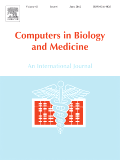
COMPUTERS IN BIOLOGY AND MEDICINE
Scope & Guideline
Harnessing Data for Tomorrow's Medical Breakthroughs
Introduction
Aims and Scopes
- Computational Biology and Bioinformatics:
The journal emphasizes the use of computational techniques to analyze biological data, including genomic, proteomic, and metabolomic datasets. This includes modeling biological systems, understanding complex biological interactions, and the development of bioinformatics tools. - Medical Imaging and Image Analysis:
A significant focus is placed on the application of deep learning and other computational methods to enhance medical imaging techniques such as MRI, CT scans, and ultrasound. This includes segmentation, classification, and the development of algorithms for improved diagnostic accuracy. - Machine Learning and Artificial Intelligence in Medicine:
The journal features research on the implementation of machine learning and AI techniques in clinical settings, including predictive modeling for disease outcomes, automated diagnosis systems, and personalized medicine approaches. - Systems Biology and Computational Modeling:
Research published in the journal often involves the integration of various biological data types using computational models to understand disease mechanisms and therapeutic targets. - Drug Discovery and Development:
The journal also covers innovative computational methods for drug discovery, including virtual screening and molecular docking studies, aimed at identifying potential therapeutic agents for various diseases.
Trending and Emerging
- Deep Learning Applications:
There is a significant increase in studies utilizing deep learning techniques for various applications, including medical image analysis, predictive modeling, and drug discovery, showcasing the potential of neural networks in transforming biological research. - Integrative Omics Approaches:
Emerging research increasingly focuses on integrative omics approaches, combining genomics, transcriptomics, proteomics, and metabolomics to provide comprehensive insights into disease mechanisms and treatment responses. - AI-Driven Personalized Medicine:
The trend towards personalized medicine is gaining momentum, with numerous studies exploring how AI can tailor treatments based on individual patient data, enhancing the efficacy of therapeutic interventions. - Real-World Data Utilization:
Research leveraging real-world data, including electronic health records and population health data, is on the rise, reflecting an interest in applying computational methods to improve clinical decision-making and public health outcomes. - Computational Drug Repurposing:
The journal is witnessing a growing trend in computational drug repurposing studies, particularly in response to global health challenges like the COVID-19 pandemic, where existing drugs are evaluated for new therapeutic uses.
Declining or Waning
- Traditional Statistical Methods:
There has been a noticeable decline in the use of traditional statistical methods for data analysis in favor of more advanced machine learning and AI techniques. This shift reflects a broader trend towards computational approaches that offer greater flexibility and predictive power. - Basic Biological Research:
Research focusing solely on basic biological questions without computational or clinical applications has decreased. The journal now prioritizes studies that integrate computational methods with biological insights. - Single-Method Approaches:
There is a waning interest in studies that utilize single-method approaches, such as isolated laboratory experiments or basic descriptive studies, as the field increasingly favors interdisciplinary approaches that combine various computational techniques. - Non-AI-based Diagnostic Tools:
The prevalence of publications centered around non-AI diagnostic tools has diminished, as more researchers gravitate towards AI-driven diagnostic solutions that provide enhanced accuracy and efficiency.
Similar Journals
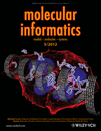
Molecular Informatics
Catalyzing Innovation in Structural Biology and Drug DevelopmentMolecular Informatics is a prestigious journal published by WILEY-V C H VERLAG GMBH, dedicated to advancing the fields of computational analysis and molecular modeling. As a key resource in the realms of Computer Science Applications, Drug Discovery, Molecular Medicine, Organic Chemistry, and Structural Biology, this journal is recognized for its significant contributions and is ranked in the Q2 and Q3 categories across multiple disciplines, positioning it among the leading journals for researchers and academics. With an impressive track record since its inception in 2010 and converging its contributions until 2024, Molecular Informatics aims to bridge the gap between computational techniques and biological applications, promoting interdisciplinary collaboration and innovation. Accessible to a global audience, the journal reflects a commitment to advancing science through open access options, making cutting-edge research available to students, professionals, and decision-makers alike. This journal serves as an indispensable platform for disseminating high-quality research and fostering the development of new theoretical and practical frameworks in molecular informatics.
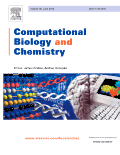
COMPUTATIONAL BIOLOGY AND CHEMISTRY
Exploring the Nexus of Biology and Chemistry through Computational InnovationCOMPUTATIONAL BIOLOGY AND CHEMISTRY is a distinguished academic journal published by Elsevier Science Ltd, focusing on the dynamic intersection of computational biology, biochemistry, and chemistry. With an ISSN of 1476-9271 and an E-ISSN of 1476-928X, this journal is committed to disseminating high-quality research that employs computational techniques to solve complex biological and chemical problems. As of 2023, the journal holds a substantial impact factor reflecting its significance and rigorous peer-review process, categorized in the Q2 quartile for both Computational Mathematics and Organic Chemistry, alongside Q3 classifications in Biochemistry and Structural Biology. With a continuous publication history spanning from 2003 to 2024, it serves as a critical resource for researchers, professionals, and students alike. The journal offers various open access options, ensuring that vital research findings are accessible to a global audience, further enhancing collaboration across disciplines. Engage with cutting-edge studies and contribute to the evolving landscape of computational methodologies in the life sciences through this esteemed publication.
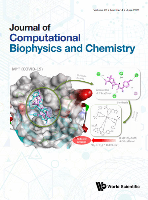
Journal of Computational Biophysics and Chemistry
Exploring Synergies Between Computational Science and BiophysicsThe Journal of Computational Biophysics and Chemistry, published by World Scientific Publishing Co. Pte Ltd, is a distinguished platform dedicated to advancing the fields of biophysics and computational chemistry. With an ISSN of 2737-4165 and an E-ISSN of 2737-4173, this journal has garnered attention since its inception, earning a Q3 ranking in Computational Theory and Mathematics and Q4 rankings in both Computer Science Applications and Physical and Theoretical Chemistry as of 2023. The scope of the journal encompasses innovative research that integrates computational techniques with biochemical applications, making it essential reading for researchers, professionals, and students alike. With open access options available, the journal ensures that cutting-edge findings are easily accessible to a global audience, thereby fostering collaboration and innovation in the scientific community. Based in Singapore, the journal aims to converge ideas and methodologies from 2021 to 2024, paving the way for transformative insights in computational methods. Join a community at the forefront of research and applications that bridge disciplines through rigorous scholarship and pioneering discoveries.

Quantitative Biology
Transforming Biological Research with Mathematical PrecisionQuantitative Biology is a prestigious journal published by WILEY, focusing on the interdisciplinary study of quantitative approaches in the biological sciences. With an ISSN of 2095-4689 and an E-ISSN of 2095-4697, this journal has established itself as a critical platform for researchers exploring complex biological systems through mathematical and computational methodologies. Operating out of China, Quantitative Biology significantly contributes to its field, holding a Q2 ranking in various categories, including Applied Mathematics and Biochemistry, Genetics and Molecular Biology, according to the latest Scopus rankings. These rankings reflect the journal's commitment to publishing high-quality research that employs advanced modeling and simulation techniques. The journal's impact is evident with its position in the 84th percentile for Applied Mathematics, indicating its relevance and growth in a competitive academic landscape. Although it does not currently operate under an Open Access model, the journal is pivotal for professionals and students alike, aiming to bridge the gap between mathematical theories and biological applications. Researchers are encouraged to submit their innovative findings and engage with the vibrant community dedicated to advancing the quantitative understanding of biological phenomena.
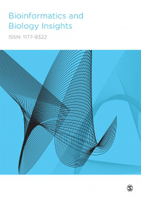
Bioinformatics and Biology Insights
Unlocking insights through innovative bioinformatics research.Bioinformatics and Biology Insights is a premier open-access journal dedicated to advancing the frontiers of bioinformatics and biology. Published by SAGE Publications Ltd, this journal is a leading platform for disseminating high-quality research that integrates computational methods with biological insights. Since its inception in 2007, the journal has garnered significant recognition, reflecting its commitment to excellence, as evidenced by its impressive impact factor and a strong presence across multiple quartiles in applied mathematics, biochemistry, and computational sciences. With a rank of Q1 in both Applied Mathematics and Computational Mathematics and various other notable rankings in related fields, it serves as an essential resource for researchers, professionals, and students seeking cutting-edge knowledge and innovations. The journal's open-access model ensures that findings are readily available, fostering collaboration and advancement in this dynamic field. Through its comprehensive scope and rigorous peer-review process, Bioinformatics and Biology Insights continues to play a pivotal role in shaping the future of biological research and computational methodologies.

PHYSICS IN MEDICINE AND BIOLOGY
Innovating Healthcare Through Physics and BiologyPHYSICS IN MEDICINE AND BIOLOGY is a prestigious journal published by IOP Publishing Ltd, with a storied history dating back to 1956 and extending through 2024. This internationally recognized journal caters to the interdisciplinary fields of medical physics and bioengineering, making significant contributions to the research and development of advanced diagnostic and therapeutic technologies. It holds an impressive Q1 ranking in both Radiological and Ultrasound Technology and Radiology, Nuclear Medicine and Imaging categories, reflecting its critical role in disseminating high-quality research. With a significant focus on merging the principles of physics with advancements in medicine, PHYSICS IN MEDICINE AND BIOLOGY serves as an essential resource for researchers, professionals, and students alike, fostering innovation and enhancing collaboration in the healthcare sector. Although the journal is not currently open access, it maintains robust participation in the Scopus database, ranking #62 out of 333 in Radiology, Nuclear Medicine and Imaging and #17 out of 63 in Radiological and Ultrasound Technology, signifying its influence and reach within these disciplines.
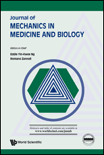
Journal of Mechanics in Medicine and Biology
Innovating at the Crossroads of Engineering and BiologyThe Journal of Mechanics in Medicine and Biology, published by World Scientific Publishing Co Pte Ltd, serves as a critical platform for interdisciplinary research at the intersection of engineering and biomedical sciences. With an ISSN of 0219-5194 and E-ISSN of 1793-6810, this esteemed journal has been dedicated to exploring the mechanical principles that govern biological systems since its inception in 2008. Based in Singapore, it addresses a diverse range of topics, from biomaterials to biomechanics, contributing valuable insights into the field’s evolving landscape. Although currently positioned in Q4 of Biomedical Engineering according to the 2023 category quartiles, it is poised for growth and increased visibility within the scientific community, fostering innovation and collaboration among researchers, professionals, and students alike. The journal emphasizes the importance of cutting-edge research and its practical implications, making it a vital resource for those striving to enhance the future of medical technologies and biological understanding.
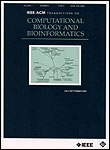
IEEE-ACM Transactions on Computational Biology and Bioinformatics
Unlocking Complex Biological Systems Through InnovationIEEE-ACM Transactions on Computational Biology and Bioinformatics is a prestigious journal published by the IEEE Computer Society, focusing on the interdisciplinary field of computational biology and bioinformatics. Established in 2004, this journal has made significant strides in contributing to our understanding of complex biological systems through quantitative methods and computational techniques, and it spans a converged publication period through 2024. As a notable resource with an impact factor that positions it in the second quartile in the domains of Applied Mathematics, Biotechnology, and Genetics, it serves as an essential platform for researchers and professionals seeking to disseminate their findings to a global audience. The journal ranks impressively in Scopus, with Applied Mathematics holding a rank of #38 out of 635 (94th percentile) and Genetics at #86 out of 347 (75th percentile), highlighting its significant influence in the scientific community. While the journal is not open-access, it provides valuable insights and cutting-edge research that are crucial for advancing the fields of bioinformatics and computational biology, making it indispensable for students, researchers, and practitioners alike.

Biomedical Engineering Letters
Transforming healthcare through cutting-edge research.Biomedical Engineering Letters, published by SpringerNature, is a prominent journal in the field of Biomedical Engineering. With a robust ISSN of 2093-9868 and E-ISSN of 2093-985X, this esteemed journal has established itself as a vital resource for researchers and professionals seeking to advance their knowledge and share groundbreaking findings. Recognized for its quality, Biomedical Engineering Letters holds a distinguished ranking in Scopus, positioned at #94/303 (69th percentile) in the Biomedical Engineering category. The journal covers a diverse scope within biomedical engineering, providing an important platform for innovative research from 2011 to 2024 and facilitating the exchange of ideas among scholars. Although it operates under a subscription model, the journal's commitment to enhancing the field makes it an indispensable reference for those engaged in cutting-edge biomedical research in Germany and globally.

Bioengineering-Basel
Catalyzing Collaboration in BioengineeringBioengineering-Basel, an esteemed journal published by MDPI, stands at the forefront of innovation in the field of bioengineering since its inception in 2014. With an E-ISSN of 2306-5354, this fully Open Access journal based in Switzerland provides a platform for researchers and professionals to disseminate cutting-edge findings across various aspects of bioengineering, including biomaterials, tissue engineering, and biopharmaceuticals. The journal has been recognized with a Q3 ranking in the 2023 Bioengineering category, reflecting its commitment to quality and relevance. By facilitating widespread accessibility to academic knowledge, Bioengineering-Basel aims to foster collaboration and stimulate thought leadership within the global research community, making it an indispensable resource for students, scholars, and industry practitioners alike.